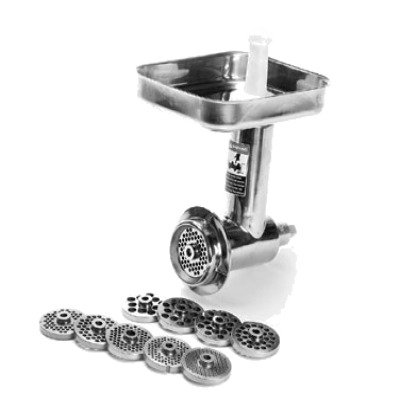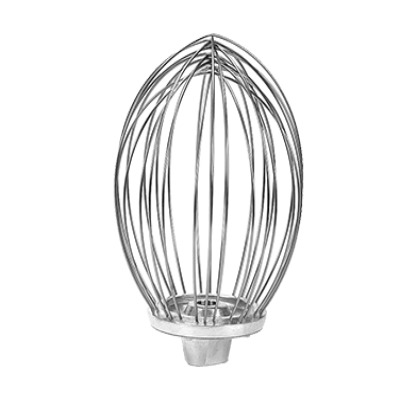Many schools have started the 2021/22 school year with students on premise yet the Delta variant has created an uncertainty of the steps needed to go forward including the challenge of serving meals and maintaining social distance standards. In conversations with customers, we’ve heard many K-12 schools are taking steps to serve meals in the classroom. A quick search on the internet of school and foodservice related publications can confirm the trend and highlights that many districts are tackling this problem as best they can without a clear best practice established. This guide can walk you through general considerations and provide some tips and suggestions to help you get started.
Before starting a meals in the classroom program, it can be beneficial to reach out to all those who will have a role in the process or outcome. Consider including teachers, custodial staff, administrators, volunteers, parents and students. Teachers and custodial staff can provide input on what they will need to make the system work. It may be helpful to have students or parents weigh in on menu ideas or changes to your traditional offering. Gathering feedback can be done via social media surveys, using online survey tools like Survey Monkey, or in online meeting venues like Teams, Zoom or Google Meet.
The first step needed to implement a meal delivery plan is determining your equipment needs. Depending on the size of the campus and the number of students, a major concern is the transport equipment required to move meals from the kitchen to the classroom. This includes products like rolling coolers, insulated transport bags, food storage bins and carts to transport meals, drinks, trays or serving supplies, etc. In the classroom you will need placemats for each desk or meal trays or meal containers, waste receptacles to collect any trash related to meals, hand sanitation and cleaning supplies for students and teachers. Lastly, you will need equipment or supplies that the classroom staff can use to track meals. A point of sales (POS) system can help track student participants for reimbursement.
When it comes to equipment, start with what you already have and repurpose it to serve meals in the classroom. Using existing equipment is cost effective and avoids lengthy lead times.
Review your carts and repurpose them: Convert salad bars to grab and go kiosks or food storage carts. Use pans as shelves in existing pan racks and utilize them as transport carts for trays or bagged lunches. Utility carts can also carry meals in prepackaged containers or hot foods in insulated carriers as well as beverages in crates.
Think differently: rolling ice caddies and mobile milk boxes can also be utilized to carry meals. Smaller or infrequently utilized refrigerators can become temporary meal storage. Ice cream freezers can keep milk or other beverages cold. Milk dollies can be used to transport meals or supplies to the classroom.
Mobilize: adding casters to stationary racks, shelving units or milk crates allows you to use these products for meal transport
Innovate with inexpensive items: need a divider between lines? find a way to hang a shower curtain rather than purchase a plexiglass divider, grab the moving dollies from maintenance and use them to easily move crates that are too heavy to carry.
For any unmet transportation needs, work with your Foodservice Equipment and Supply Dealer to identify the best equipment solutions and sources to complete your system.
Creating a Grab and Go Station can make meal serving quick and easy. With Grab and Go, students pick up prepackaged meals at a set location in a common area like a food cart located in the school cafeteria. For breakfast service in the classroom, it can be efficient to set up the grab and go meals in a kiosk near the school entrance. Students take a meal as they walk in and can have their meal once they are settled in their class room. Grab and Go stations can also work well for older children who change class rooms before and/or after lunch. Reusable to-go containers, like MyGo Containers™ can be used to package meals for pickup and will reduce the amount of non-food waste created by single use foam or paper containers. These containers reduce expenses from disposable to-go containers and they improve functionality. Remember to include setting up extra trash receptacles in the classroom making waste collection easier when serving children in class. If you opt for reusable containers like MyGo Containers, you can add a collection receptacle for students to place their MyGo in when finished with the meal. You can also set up a POS system at a kiosk asking students to swipe their id as they pick up a meal. It is important to find a tracking method that will work for your operation which is touchless. Depending on the sophistication of your technology department, some schools have implemented an app for ordering meals that are picked up at a designated pick up locations. These locations can be as simple as a rack with tagged meal spaces.
Personal Protective Equipment (PPE) is also important to ensure that a meal delivery program is safe. Recommended PPE includes face masks or face shields, hand sanitizer stands or stations, signage to reinforce social distancing and safety guidelines, barriers /dividers and social distancing floor signage or markers.
Packaging – the packaging of meals is vital to ensure safety of students. Some of the different equipment that can help include bag sealers and bags designed to withstand hot and cold temperatures, packing equipment, disposable items like paper plates and utensils, and to-go containers either reusable or disposable. Individually packaged items and meals are quickly becoming the standard.
Equipment can be purchased new or used/refurbished for a reduce price. The cost to operate and any supplies will vary from model to model. Sealing equipment requires supplies for each seal and this expense needs to be included in your budgeting.
Single use containers like foam or paper to-go containers need to be purchased frequently because of the space they require to store. Additionally, you may need to plan for increased trash removal expenses or more frequent pickups due to the additional trash generated by these containers.
Utilizing a bulk milk dispenser with reusable beverage containers can be a cost effective option to the more traditional single serving milk cartons and it will reduce non-food waste and as well as limit waste from any containers that were only partially consumed.
Reusable to go containers can reduce non-food waste and provide a better meal experience. The MyGo Containers™ have food compartments that are fully separated and a leak resistant lid with a gasketed seal. When serving hot foods, these containers will hold heat longer than a traditional disposable container and foods don’t mix up during transport. They will last for over 1000 washes through a dish machine so these containers have a less expensive than disposables over time.
Be sure to review your district’s purchasing policy. You may be able to purchase equipment in bulk to be used by multiple schools or classrooms and in turn get better pricing.
Look for alternative sources of revenue like grants or budget dollars allocated for sustainability initiatives. Implementing reusable to-go containers instead of foam or paper disposable containers may qualify for budget dollars allocated for sustainability initiates because these products reduce waste. There are also government grants available.
After meals are served, return of all supplies and clean up needs to take place. For any reusable beverage or food containers, washing and drying time needs to be considered. If you are serving breakfast and lunch, you may need a second set of containers if there isn’t adequate drying time between meals. Because plastic does not dry quickly, areas need to be established for any needed drying racks which can also be used to store containers when not in use. Any supplies can be collected and returned to the centralized kitchen area using the same transportation method utilized for delivery.
Ready to get started?
Here are a few questions that will help you begin:
1. How many meals will you be serving in the classroom?
2. Is this breakfast, lunch or both?
3. Will your menu include hot food?
4. What serving solution best fits your menu? (paper plates, sack lunch, to-go container)
5. Do you need to transport meals to multiple campuses?
6. Are students able to pick up meals at a kiosk or will you deliver meals to the classroom?
7. Will you need to prepare meals for students that are remote?
8. What staffing changes will be needed to change from cafeteria style to classroom meal delivery?
9. Where will you store transport equipment when not in use?
10. Are there changes to your warewashing equipment needed?
We’ve worked with several colleges and universities as well as well as K-12 schools to outfit their foodservice operation to meet the demands of class room and remote meals as well as socially distanced meal service. If you have questions or need assistance in launching a classroom meal program at your school, you can call Jessica Gomez, our campus dining expert at 630-821-0244 or reach out via email (jgomez@cooksdirect.com) and we can help you design and equip an efficient and successful program.




















